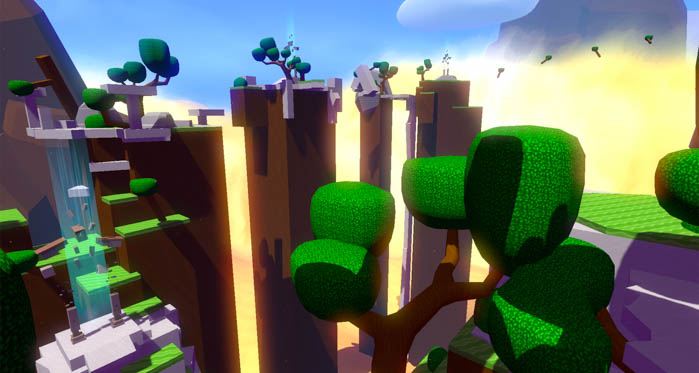Index
Gaming playback
For in-game playback, we decided to test the system using Windlands, a fast-paced, motion driven grappling hook adventure game that makes full use of locomotion simulation for those unaccustomed to VR environments. Admittedly, we have only tested VR headsets up until this point with less motor-oriented titles including Star Trek: Bridge Crew, Everest VR and Nvidia’s VR Funhouse on Steam. None of these titles can instill any lasting sense of motion sickness as well as Windlands, and for this reason we were glad to test the motion blurring compensation (low persistence) and tracking responsiveness of Sony’s headset verses more PC-oriented headsets like the Oculus Rift and HTC Vive.
Windlands VR by Psytec Games
From within the game menu, Windlands provides users a variety of comfort options depending on their experience with using VR headsets – those who have their “VR legs,” and those who do not. There is an option to enable “Comfort Turning,” which updates the user’s positioning in space only when the thumbpad is moved in one direction or another. The game also provides the option to strafe or to place a virtual cage in front of the user, which may be useful for reducing motion sickness.
During our first experience on Normal sensitivity settings, we could not play for more than seven to eight minutes before the nausea started to kick in, at which point we took a short break and then readjusted the options to enable the roll cage during gameplay. This improved our ability to look up and grasp onto trees with high branches without experiencing vertigo. All in all, the in-game experience was quite enjoyable, even representing a breakthrough in VR gameplay mechanisms that can alleviate some of the novice user reservations of dawning a motion-packed VR title for the very first time.




